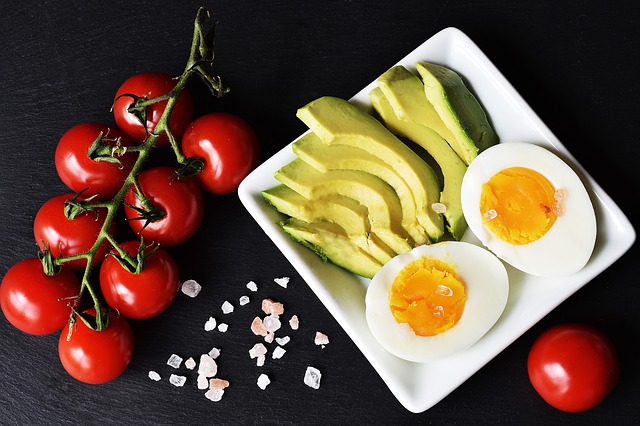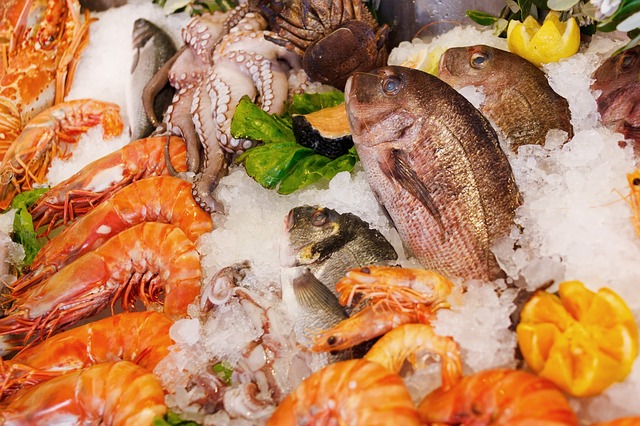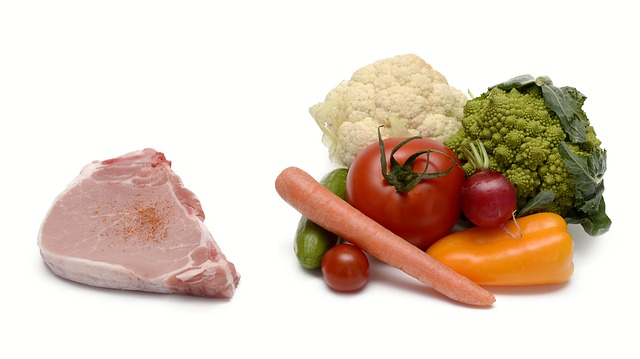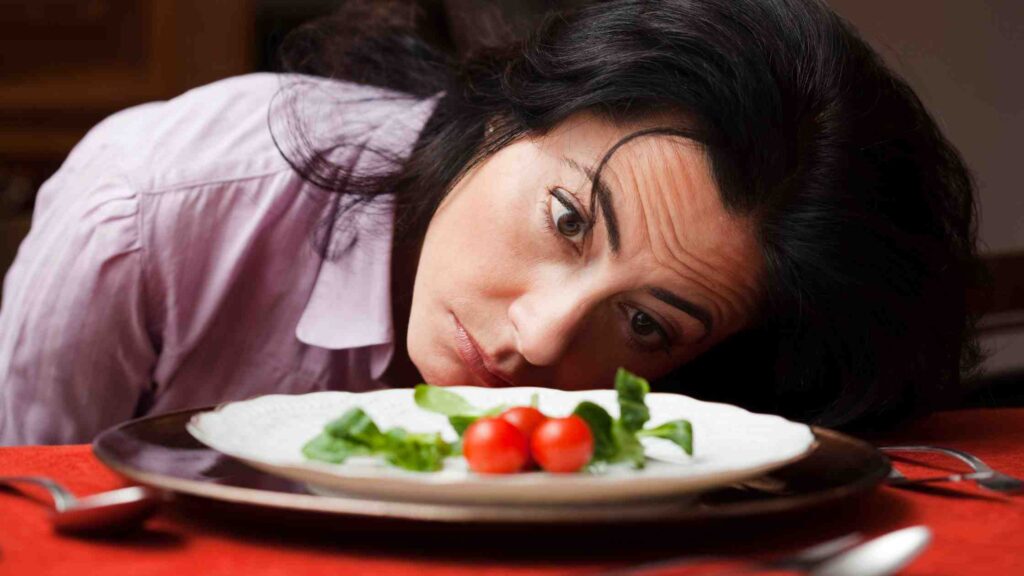Last updated on September 10th, 2024 at 06:18 pm

People choose diets for different reasons. Some want to lose weight; others strive for better overall health; many seek improved metabolism. But, we often get confused about “Is Paleo or keto better?” and which will help us to achieve our desired goal.
Although keto and paleo have some overlapping characteristics, each one is unique in its way.
In this article, we will look at both diets and see which one is right for you. By the end of the article, you will be clear about the paleo diet vs keto diet and can make an informed decision.
Is Paleo or keto better?
To understand which among them is better for weight loss we first need to understand what is keto diet and paleo diet. So, let’s start with ketogenic diet.
The Ketogenic Diet
The keto diet has one main goal above all else: make the body produce ketones. Ketones are molecules that are produced as a result of the burning of fat in our body. This can happen when there is less intake of carbohydrates (fasting), excessive prolonged physical activity, type 1 diabetes, starvation.
Before we proceed to the diets that help in the production of ketones, we first need to understand the importance of ketones. And how it is actually produced inside our body. To know how effective is the keto diet, check this article.
Body physiology behind production of ketones
The human body is programmed to run and extract energy by burning a mix of glucose and fat. The glucose is obtained mostly through the consumption of carbohydrates through our diets (carbs).
The process of digestion converts the macronutrient from the diet (carbs) into an energy source for our cells (glucose).
Also, eating carbohydrates cause insulin release, which in turn prevents the production of ketones from fat. This is because insulin stops the release of fat from fat stores and thus shuts off the substrate for ketone production.
To prevent insulin release, you must eliminate carbohydrate intake. As carb reduction occurs, the body will become depleted of glucose stores and our body searches for other sources of energy. The body taps into stored body fat for energy.
After a certain period of time, our body breaks down more and more fat, leading to ketone production. We call this state of our body as a “state of ketosis”.
Ketones are produced in the liver through a multistep conversion of fats. Ketosis indicates the presence of ketones in the blood above 0.5mM.
If you are thinking that by taking more fats we can produce ketones in our body (we can get into ketosis) then you are wrong. By increasing our fat-intake, the body can become metabolically flexible, burning fat for energy instead of carbohydrates.
So, how to get into ketosis? below we will have some extract from one of the articles which you may visit for detailed information.
How to Get into Ketosis?
The process of getting into ketosis varies from person to person time-wise.
Triggering a state of ketosis is usually done one of two ways, but in both ways, one undergoes the same physiological transformation.
The two ways are:
- The first is endogenously, meaning production of ketones occurs naturally in the body, usually through diet or fasting.
- The second is exogenously, in which blood ketone levels are increased by consuming a ketone supplement, like HVMN Ketone.
Keto Health Benefits
The benefits of keto go beyond simply slimming your waistline. Studies have shown that a ketogenic diet may help individuals with
- Type 2 diabetes by effectively lowering blood glucose.
- Improvement in glycemic control and weight loss.
- The keto diet may improve cardiovascular health markers, including lowering blood pressure readings.
- Keto can also help treat neurological disorders. Since the early 1900s, children who suffered from epilepsy benefited from the diet as a form of alternative therapy. Many have also noted subjective feelings of mental clarity while on the keto diet.
- Keto might even help improve health conditions characterized by inflammation through the signaling actions of ketone body beta-hydroxybutyrate (or BHB), which blocks NLRP3 inflammasome-mediated inflammatory disease. Animal studies have shown the ketogenic diet may improve longevity, memory, and health span.
Keto Diet Basics

A balanced caloric intake on keto is essential for meeting dietary and weight loss goals. Every calorie you consume is made up of one of three types of macronutrients: carbohydrates, fats, or proteins.
The ketogenic diet consists of a high-fat, moderate-protein, low-carbohydrate macronutrient ratio.
- High fat: 60% – 80% of total calories from fat
- Moderate protein: 15% – 35% of total calories from protein
- Low carbohydrate: 5% or less of total calories from carbohydrates
Your macronutrients can be calculated on your own, but there are macro calculators online to simplify the process. Just set each macronutrient within the suggested ranges for the keto diet.
To illustrate this, let’s take a look at a hypothetical person.
- A 200 pound male with 17% body fat will have a basal metabolic rate (BMR) of approximately 2,000 calories.
- Let’s say they want to maintain their current weight. Using a macronutrient ratio of 25% protein, 5% carbohydrates, and 70% fat, this person will consume 179g of fat, 28g of carbs, and 144g of protein.
- The ratio is not only keto-friendly, but also provides adequate protein for retaining lean body mass (at least 0.8g protein per pound of LBM).
Consuming a low-carb diet will cause a metabolic state of adaptation, allowing for ketone production. If you want to get into ketosis faster, trying an exogenous ketone supplement, like HVMN Ketone.
Keto-Friendly Foods
The keto diet is based around healthy fat sources and low-carb food choices. Some of the best keto friendly foods include:
- Meats, including fatty fish and beef
- Non-starchy vegetables
- Many varieties of cheese
- Eggs
- Greek yogurt
- Avocado
- Nuts and seeds
- Berries
A day of eating on the keto diet may look something like this:
- Breakfast: four whole eggs, two pieces of bacon
- Snack: one serving of almonds, one serving of blackberries
- Lunch: 8oz of chicken breast, 100g of asparagus, one serving of Greek yogurt
- Snack: one serving of cottage cheese, one serving of blackberries
- Dinner: 6oz of salmon, 100g of Brussels sprouts
Your meal plan should be goal specific, but this is just one way of incorporating the keto meal plan into your everyday life. It’s not as hard and many people think!
The Paleo Diet

The Paleo diet is based around foods early humans ate in the Paleolithic era (up until 10,000 years ago).
The typical Paleo diet includes lean meats, fish, fruits, vegetables, nuts, and seeds—foods sourced by hunter-gatherers during Paleolithic times. The diet does not contain foods emerging through more modern agricultural methods, such as dairy products, legumes, and grains. And of course, nothing processed; it’s a focus on whole, healthy foods and food groups.
The Argument for Paleo
The main goal of the Paleo diet: eat like a caveman. Paleo followers believe our bodies do not have the adaptation necessary to process modern foods, leading to increased incidences of heart disease, diabetes, and obesity.
Paleo seeks to eliminate harmful side effects associated with modern agriculture.
Some people question the safety of Genetically Modified Organisms (GMOs) and genetic engineering used to mass produce fruits and vegetables. Pesticides used in agriculture are also a cause of concern for some individuals. Although these scientific advances are designed to mass produce quality food, some question their dietary safety.
The Paleo diet has not been scientifically studied in the same detail as keto, but there is some research suggesting potential health benefits. A study performed on the Paleo diet indicated glucose tolerance may improve in people with type 2 diabetes.
There is also evidence of improved glycemic control and lower blood pressure following the Paleo diet. Similar to keto, when processed food and refined sugars are removed from a diet, there should be some health benefits.
Paleo-Friendly Foods
The foods found on paleo should have existed thousands of years ago, consumed by our great-great-great-great-great grandfathers and grandmothers. The most common paleo foods include:
- Grass-fed meats
- Seafood
- Fresh fruits and vegetables
- Eggs
- Nuts
- Seeds
- Oils from healthy fat sources (e.g. avocado oil, coconut oil)
As you can see, the food choices on the Paleo diet have some overlap with the keto diet, but there are dietary and philosophical differences as well.
Paleo Diet vs Keto
What do Keto and Paleo Have in Common?
The Paleo and keto diets share many characteristics even while being unique in their own ways.
1) Whole Foods
Paleo and keto diet plans are both based around high-quality whole food sources.
A whole food is one that hasn’t been processed and generally does not have added ingredients. Processed foods are eliminated from both diets and replaced with fresh items such as vegetables, meats, and nuts.
2) Grains and Legumes
Paleo and keto do not include grains and legumes as part of their diets, but for different reasons. Paleo eliminates grains and legumes because they were unavailable during Paleolithic times and contain anti-nutrients. Anti-nutrients are found in some plant-based foods and may cause digestive issues when consumed. They are considered the antithesis of the paleo diet.
The plants produce these anti-nutrients as defense mechanisms, but can have a damaging effect on the human gut.
One such anti-nutrient is phytic acid, and it’s one of the main reasons Paleo excludes grains as legumes in the diet. Phytic acid can make proteins, fat, and starches less digestible.
The keto diet eliminates grains and legumes due to their carbohydrate content. Grains and legumes can take the body out of ketosis preventing the breakdown of fat stores into ketones.
3) Processed Sugar
Both Paleo and keto discourage the intake of added sugar—but for different reasons.
The keto diet has no sugar due to the insulin-spiking effects and carbohydrate content. The Paleo diet, on the other hand, allows natural sugar sources (such as maple syrup and honey), but completely eliminates processed sugar. Keep an eye out for processed sugar, as it’s rampant in American diets.
4) Healthy Fats
Keto and Paleo diets both promote healthy fats as a key component of their diets. Foods such as avocado oil, coconut oil, and olive oil are popular healthy fat options for both groups.
The keto diet uses healthy fats as a fuel source, while the Paleo diet encourages healthy fats due to their Paleolithic origin. The common theme of both diets is to not be afraid of consuming a high-fat diet. This can be a valuable fuel source after some adaptation from a body dependent on carbohydrate.
5) Weight Loss
One of the main drivers for any diet is weight loss. Although there is limited research available for the long-term success of these diets, studies have shown weight loss benefits in the short term.
Low-carb, high-fat diets, such as the ketogenic diet, have been successful for weight loss.
One study on obese women showed 9% weight loss after six months on the diet and 10.6% weight loss after a year.
On the other hand, the Paleo diet has a limited number of scientific studies with which it’s associated. Some studies have suggested the diet may help with weight loss and the correction of metabolic dysfunction, but further research needs to test these findings.
Paleo diet vs Keto: Table of similarity
| Keto Diet | Paleo Diet | |
| Whole food | Based on whole food | Based on whole food |
| Grains & Legumes | Do not contain as it has carbohydrate | Do not contain as unavailable during Paleolithic times & contain anti-nutrients |
| Processed sugar | Do not contain as its rich in carbohydrates | It allows natural sugar like honey, maple syrup |
| Healthy fats | Keto promotes healthy fats | Paleo promotes healthy fat |
| Weight loss | Helps in weight loss | Helps isn weight loss |
How are Keto and Paleo Different?
As you can see, many of the food choices and goals overlap with both diets; but there are key differences unique to each one.
1) Different Belief Systems
Although many of the food choices in both keto and Paleo overlap, the philosophies behind each is different.
The keto diet creates metabolic adaptations with a science-based approach. It’s all about consuming a lot of fat in comparison to very few carbohydrates. Paleo employs a holistic ideology and lifestyle. Keto and Paleo have similar dietary requirements, but for different reasons.
2) Carbohydrate Composition
The keto diet involves an extremely low carb intake. The Paleo diet allows certain carbohydrates as long as they’re from whole foods. Since processed carbs are eliminated, you often end up with a low carb diet no matter which plan you choose to follow.
Some wholesome carbs include sweet potatoes, taro root, carrots, and winter squash. As we mentioned, Paleo also allows natural sugar sources such as maple syrup and honey—but these wouldn’t be allowed on keto based on their high carb content.
A true keto diet eliminates almost all carb sources, even certain vegetables (such as potatoes). Any amount of carbs can raise blood sugar, trigger insulin release, stop ketogenesis and take the body out of ketosis.
3) Dairy
A strict Paleo diet discourages dairy, as it wasn’t consumed in the Paleolithic Era. The keto diet allows for certain types of dairy to be consumed; in fact, they’re even encouraged.
The most popular keto dairy options include grass fed butter, heavy whipping cream, Greek yogurt, and many cheese varieties (Swiss, provolone, mozzarella, brie, and Jack are all considered keto-friendly). Since these dairy options are low in carbohydrate content and high in fat, they fit within the keto framework.
Which Diet Should You Choose?

A diet plan is like building a house. For keto and Paleo, the floors, walls, and roof beams may be similar. But their foundations are completely different. To recap, the keto diet is based on creating metabolic adaptations using a science-based approach. The Paleo uses a holistic ideology based on food choice rather than a macronutrient focus.
Different groups can benefit from both diets, but you should focus on the one suited to your individual goals.
If you’re a diabetic, keto may be beneficial to you, due to carb-restriction and reduced insulin sensitivity. Endurance athletes benefit from the fat-adaptation that is characteristic of keto, as prolonged endurance exercise requires less energy from glucose stores, enabling the body can tap into the unlimited fat stores for energy over the course of a long race.
Resistance training athletes such as bodybuilders and CrossFit-ers may prefer Paleo, as the carbs may be better utilized during high-intensity training sessions.
In the world of Paleo vs keto, there is no clear cut winner. The best diet is the one you can stick to—so base your dietary choices around your specific needs. The results should be sustainable over a lifetime instead of being short sighted.
Originally published on HVMN by Ryan Rodal
Keep reading: Sleeping with smartphone, TV, lights on may lead to obesity
The author is a physiotherapist who has been practising for the last 17 years. He holds a Bachelor's in Physiotherapy (BPT) from SVNIRTAR (Swami Vivekananda National Institute of Rehabilitation and Research), one of the prestigious physiotherapy schools in India.
Whatever he learns dealing with his patient, he shares it with the world through blogs and e-books. He also owns a YouTube channel, "Sunit Physiotherapist" with over 8 lakh active subscribers. Here, he shares everything he gets to learn serving the patient.

Pingback: TRE Eating: Quickly achieve weight loss goal by restricted eating - Physiosunit